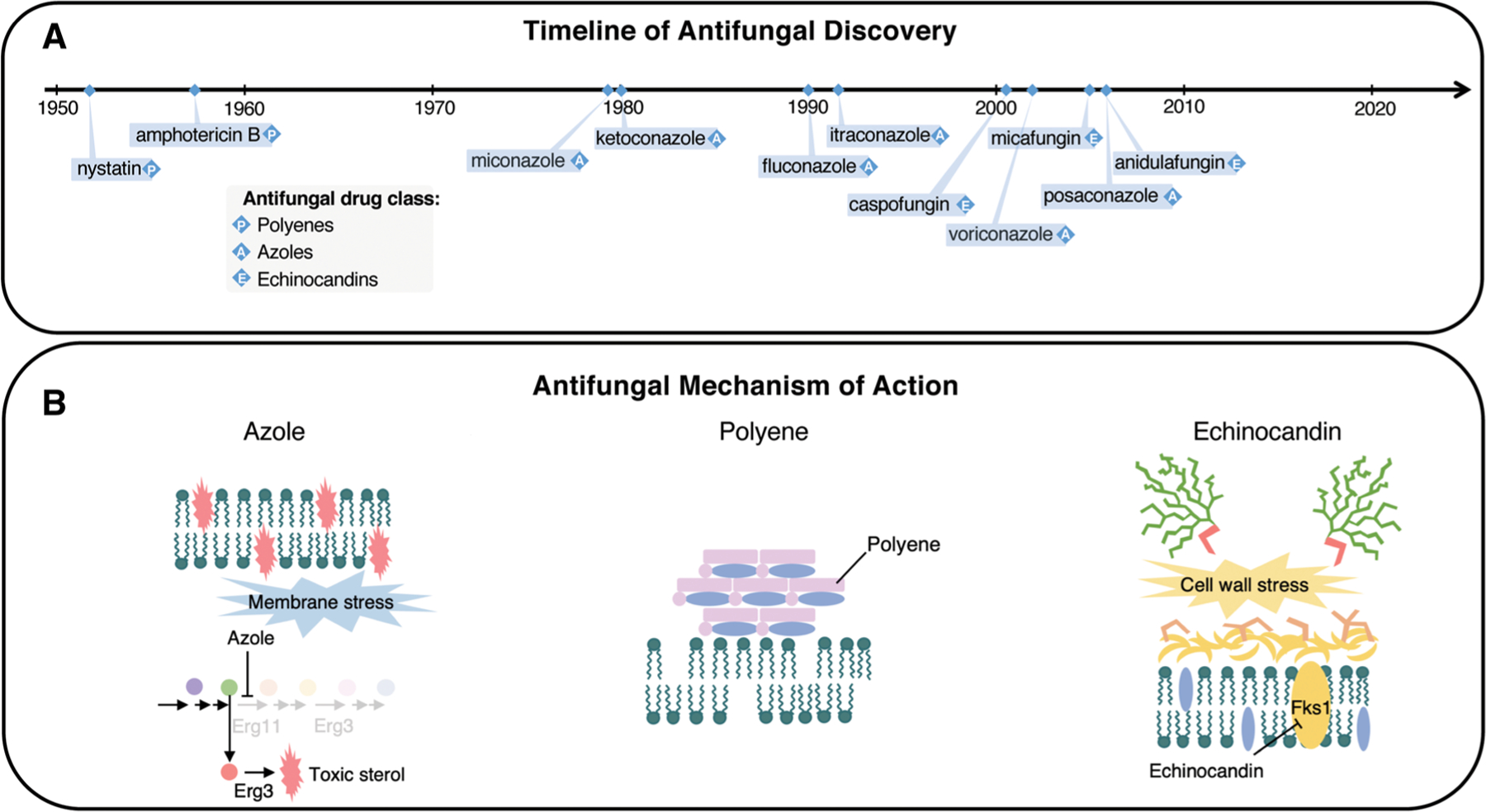Figure 1.

Timeline of antifungal discovery, and antifungal drug mechanisms of action. (A) The clinical introduction of antifungal agents belonging to the three major clinically used classes: polyenes, azoles, and echinocandins. (B) The mechanisms of action of antifungal drugs. Azoles exert fungistatic activity by inhibiting lanosterol 14-α-demethylase (encoded by ERG11), which leads to a block in ergosterol synthesis and the accumulation of toxic sterol intermediates, produced by Erg3 (left panel). Polyenes act as a fungicidal “sterol sponge” by forming extra-membranous aggregates that extract ergosterol from lipid bilayers (middle panel). Fungal cell walls are composed of (1,3)-β-d-glucan covalently linked to (1,6)-β-d-glucan, as well as chitin and mannan. Echinocandins prevent the synthesis of (1,3)-β-d-glucan by inhibiting the (1,3)-β-d-glucan synthase (encoded by FKS1 in C. albicans and by both FKS1 and FKS2 in S. cerevisiae); this results in a loss of cell wall integrity (right panel). Adapted, with permission, from Ref 134.
